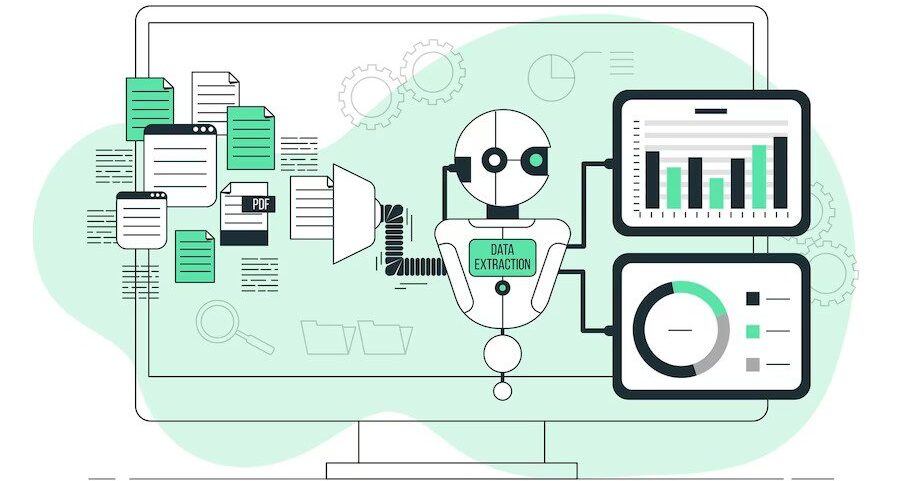The Small Business Owner’s Roadmap To Data Automation
Although digital transformation has provided small business owners with many highly convenient digital tools, these resources come with a steep learning curve alongside additional commitments and time investments that many modern business owners simply don’t have.
So what’s the answer to making your business software and hardware work for you without having to risk getting lost in the endless information that these tools can offer?
The short answer here is, of course, automation. From marketing campaigns and customer emails to inventory management and invoicing, small business owners of today have the technology they need to automate virtually all of their digital processes. But there’s one particular avenue where automation can be infinitely handy: business data analytics.
Believe it or not, but automating your business’ data harvesting, loading, and presenting processes isn’t actually too difficult a task to complete. In fact, by following just a few simple steps, even your own small business can reap all the benefits that come with data analysis. And we’ve just happened to outline these steps toward data automation right here.
Small Business Owner’s Roadmap To Data Automation

Step 1: Build foundational knowledge of data automation
Whether you opt to enrol in a data analytics course yourself, invest in an IoT data platform, recruit a dedicated data analytics consultant to provide expert insights, or all of the above, the first thing that you should aim to do as a small business owner is develop a strong foundational understanding of the benefits of data analytics for your organisation and the processes involved when seeking to develop data automation solutions.
Knowing what to expect from your data automation project can naturally place this business investment within a real-world context, thereby enabling you to follow the project’s development independently and contribute wherever you feel your voice needs to be heard.
We’re not saying that you should educate yourself because outsourcing data analytics is high risk. In actuality, the straightforwardness of ETL (or ‘extract, transform, and load’) tools and the prevalence of data analytics features in a wide range of other business analytics tools (like Google Analytics and other web SEO tools), can help small businesses owners develop their own automation processes or easily ascertain for themselves whether processes developed by third parties are as effective and optimized as they can be.
In this regard, building a working knowledge of data analytics practices and methodologies can help small business owners maintain a hands-on approach to their company’s own data analytics and data automation requirements.
Step 2: Outline your budget to find the right ETL tools
Once you’ve gained a clear understanding of what you stand to gain from investing in data automation for your business, it’s time to use your newfound knowledge to estimate what budget you’ll expect to need for this automation project. Generally speaking, small business owner’s should expect to spend too much on their first data automation project, so you should feel encouraged to allocate a portion of your analytics and business growth budgeting towards the development of your automation processes.
The main reason you’ll want to finalise your budget prior to developing your automation processes themselves is to ensure that the project is handled with great focus and with all the most suitable ETL tools in place. Finding the right ETL tools for your processes begins first by assessing the pre-packaged APIs (or ‘application programming interfaces’) used in all your shortlisted applications. Look for APIs that connect up with databases and other business applications that you’ll be using to manage your business, such as your website builder or even Agency Analytics.
ETL tools that are well-equipped to connect seamlessly with all the other applications you’re expecting to use on a daily basis are naturally more likely to slot into your business’ digital management ecosystem with minimal fuss.
Step 3: Develop (and test) your ETL processes
Once your ETL software has been selected, it’s finally time to get to work and start developing your ETL processes. As is the case with manually managing databases, your ETL processes will act as the bones of your business’ data automation. The extraction component of your automated process should be concerned with the selection of which data you’d like to see extracted from your data harvesting tools.
Similarly, the transformation of that data to fit pre-programmed models designed to convert your data into an analyzable format to suit your business. Automating data transformation will naturally require using the correct algorithmic techniques, so be sure to enlist expert assistance to ensure that all techniques used can be applied to all data sets rather than just the set you may be working on during the automation set-up.
And that brings us to automating the process of data loading. So long as your data transformation processes have been thoroughly tested, you’ll find that the conversion of transformed data into CSV (or comma separated value) files should be smooth. Once the CSV files have been generated, they can then be processed into your database and prepared for data analysis and reporting.
It’s a good rule of thumb to take a holistic approach to your data automation project, examining the processes of data extraction, transformation and loading as an uninterrupted flow despite the fact that this sequence will be occurring over multiple applications. At the end of the day, your raw data will still be represented in business reports, so considering your ETL process using a whole systems approach will help ensure that the quality of your data stays consistent.
Step 4: Reassess and refine as required

Once your automated system has been fully fleshed out and tested, all that’s really left for you to do is monitor the system at routine intervals and assess produced data reports alongside reading through data records to search for any discrepancies between raw data and final figures. A vigilant eye will help identify any faults in your automated system nice and early so that these issues can be rectified promptly.
On top of monitoring to ensure accuracy, you should also reassess your automation strategy routinely to make absolutely certain that the data you’ll be collecting is still relevant to your business’ growth and development goals. For instance, there’s no use harvesting data on website landing pages that were being used in digital campaigns that have since concluded.
Spending the majority of your work week concerned with business operations that could easily be automated is simply not a cost-effective approach to the management of your business. With this in mind, automation is a vital component in the growth strategy of any modern business, regardless of its size and industry.
Automating your data analytics processes can effectively allow small business owners to take full advantage of the business data at their fingertips without having to sacrifice too much time on data analysis themselves. Let the computers do what they do best, and be there to receive all the data reports your automated data processes are programmed to produce. That way, you can ensure that you make only the strongest, most well-informed business decisions

















